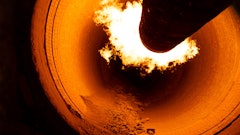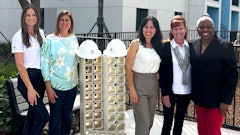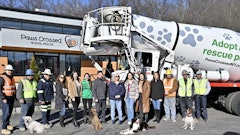The next phase of a four-year research and development project supporting the commercialization of Solidia Technologies’ carbon dioxide-reducing cement and concrete processes will commence with the commitment of an additional $752,000 from the US Department of Energy's National Energy Technology Laboratory (NETL).
The project entitled "Utilization of CO2 in High Performance Building and Infrastructure Products" is co-funded by NETL through its Carbon Storage Technology program, and by Solidia Technologies. The overall goal is to use an alternative to ordinary Portland cement (OPC) to produce a CO2-cured concrete. The alternative cement, named Solidia CementTM, is a synthesized alkali-earth compound that can be fabricated from the same raw materials and in the same kilns as OPC, albeit with lower energy consumption and reduced CO2emissions. The CO2-cured concrete, named Solidia ConcreteTM, offers improved mechanical properties and durability while allowing for the safe and effective storage of CO2 in construction materials.
Since its inception, the project has focused on the development and optimization of Solidia’s proprietary CO2-curing process. To date, the technology has evolved to the point where Solidia Concrete can be made using materials and equipment common to OPC-based concrete production. This achievement facilitates the quick adoption and broad use of Solidia Concrete across the entire precast concrete market and magnifies the ability of the program to reduce atmospheric CO2 levels.
The project will now focus on demonstrating these CO2 reduction and storage capabilities on a prototype scale in a commercial concrete plant. The new research objectives, designed to help advance the technology towards commercialization, include: 1) the demonstration ofthe basic performance of Solidia Cement produced at a commercial cement plant; 2) the demonstration of the utility of this cement in at least six different precast concrete applications; and, 3) the actual commercialization of concrete manufacturing using CO2-curing.
"Successful commercialization of Solidia Concrete technology would benefit national efforts to reduce carbon emissions," said NETL Carbon Storage Technology Manager Traci Rodosta. "Using CO2 rather than emitting the greenhouse gas to the atmosphere is a win-win situation. This project illustrates the potential of the Solidia technology to reduce CO2emission in the near term, as we continue investigating further solutions as part of the President's 'all of the above' energy strategy."
NETL supports Solidia Concrete technology because of its potential to consume CO2 as it cures, based on NETL’s mission to support the development of technologies that reduce or avoid man-made greenhouse gases emitted to the atmosphere.
“DOE's National Energy Technology Laboratory continues to be an outstanding partner in the development and commercialization of Solidia Concrete. Their timely support has been instrumental in moving this sustainable manufacturing technology from the benchtop to the factory floor," commented Solidia’s Chief Technology Officer, Nicholas DeCristofaro, Ph.D.
Additional third-party research and collaborative testing substantiates Solidia’s technology and product development. Lafarge, a world leader in building materials, is instrumental on research in concrete applications, and The Linde Group, a global leader in the international gases market, has extended its CO2 supply and delivery expertise to technology development and commercialization. The U.S. Department of Transportation’s Federal Highway Administration supports Solidia with a Cooperative Research and Development Agreement (CRADA) to examine transportation infrastructure applications at the Turner-Fairbank Highway Research Center.
Long-term research continues at Rutgers University, where the original generation of the technology was developed, and collaborative research efforts are underway in laboratories at Purdue University, Ohio University, and the University of South Florida. The strength and durability of Solidia Concrete has been verified according to ASTM and AASHTO specification by the CTLGroup, formerly the R&D laboratory of the Portland Cement Association.
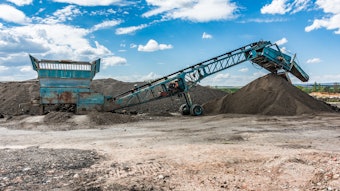
![Img 1707[56]](https://img.forconstructionpros.com/files/base/acbm/fcp/image/2023/04/IMG_1707_56_.6437076c97961.png?auto=format%2Ccompress&fit=crop&h=191&q=70&rect=0%2C462%2C1920%2C1080&w=340)













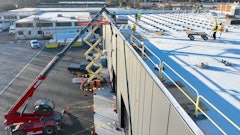
![Glp Porsche 072723 465 64ee42287c29e[1]](https://img.forconstructionpros.com/files/base/acbm/fcp/image/2024/03/GLP_PORSCHE_072723_465.64ee42287c29e_1_.65e88b8589b9c.png?auto=format%2Ccompress&fit=crop&h=135&q=70&rect=0%2C520%2C2250%2C1266&w=240)

